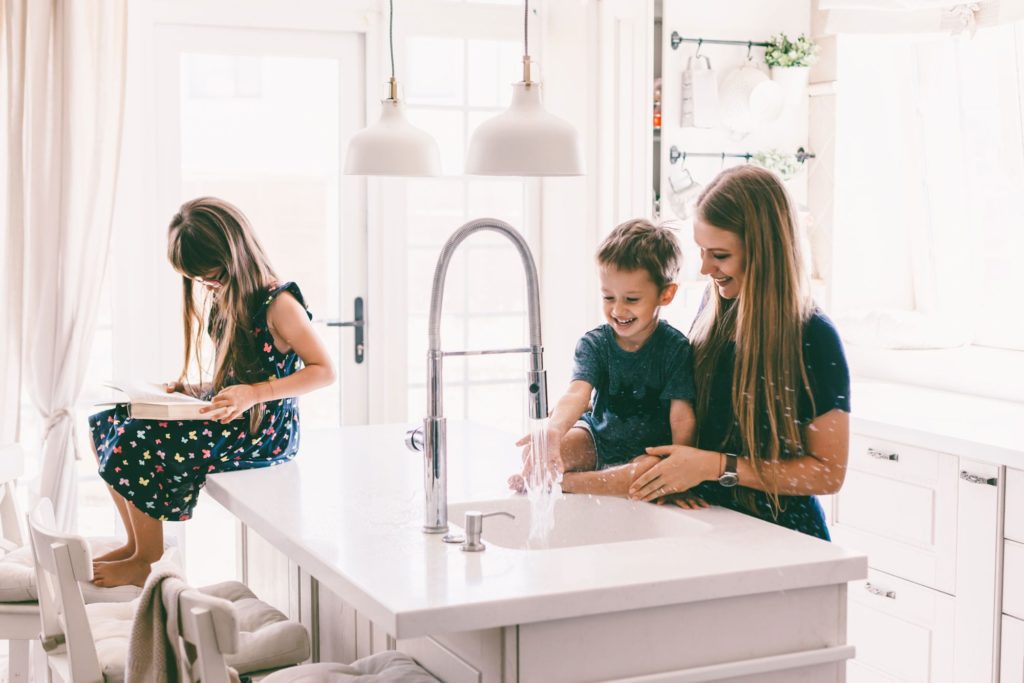Help for homeowners: 5 ways to prevent costly plumbing issues
As a homeowner, you probably already know that preventative maintenance for your HVAC system is an important part of your home’s routine care.
Servicing your furnace in the fall and your AC unit in the spring just makes good sense. These steps help prevent small issues from becoming expensive ones, while avoiding catastrophic failures at times when you need your HVAC system performing at its best.
But did you know that your home’s plumbing system also benefits from annual preventative maintenance? And for similar reasons. Catching issues early saves both money and a lot of hassle. Repairing small leaks, early detection of problems, and addressing sewer pipe issues at first notice is less expensive and disruptive than dealing with the aftermath.
Proactive Plumbing Maintenance Checklist
Why do we recommend that homeowners in the Northeast and Mid-Atlantic region inspect your home’s plumbing system in the spring? As we emerge from the grip of winter and begin to thaw out, it’s the time of year when leaky pipes and the impacts of new tree growth on sewer lines are felt the most.
A proactive plumbing maintenance checklist should include all critical components of your plumbing system, including pipes, valves, water heater, and drains. Here are the 5 most important plumbing maintenance tips to add to your spring cleaning checklist:
1. Look for leaks
Unknown or unrepaired water leaks, even small ones, can ratchet up your water bill by wasting thousands of gallons of water a year. To prevent this, inspect all faucets and showerheads—including the dishwasher and washing machine hoses—for signs of leaks, noting water spots, moisture, or puddles, and the presence of mold, mildew, or rust.
Also, spring is the time of year when homeowners typically turn their outdoor water back on, so check for leaks around hose bibs. If water was accidentally left in your pipes and froze, it can cause plumbing issues. If you experience leaking, quickly shut off your water and call a professional plumber to help.
2. Inspect sewer lines
A plumbing issue no homeowner wants to face is the failure of a sewer line. There are several factors that can contribute to a broken sewer pipe, but in the spring new tree root growth is a common culprit. Other frequent issues that contribute to sewer failure include old and aging pipes, pipe corrosion, and calcification. If you’re concerned about tree roots impacting your sewage lines, call a plumbing professional with video inspection capabilities to identify the issue and fix it the first time. A trenchless sewer line may be recommended as a least-invasive solution.
3. Check for pipe corrosion
Inspect all of your home’s visible piping. Discolored pipes may have begun to corrode, and should be replaced. While pipes last a long time, they don’t last forever. Older or deteriorating pipes can have all kinds of negative effects on your whole plumbing system, including interfering with water pressure by preventing the water flowing through your pipes from gaining momentum. This can lower the effectiveness of your water-based appliances and also makes clogs more likely.
Corrosion or build-ups of scale or other minerals can materialize on the inside of older pipe’s walls, forcing the water to work harder to push through to you. This will raise your water bill and eventually lead to full clogs.
4. Observe drainage speed
Watch your drains to observe drainage speed. If any are draining slower than you would like, it might be time to get them cleaned. We don’t recommend liquid drain cleaners, which in addition to eating away at your clog can continue to eat away at your pipes.
Instead, try pouring a half-cup of baking soda followed by a half-cup of vinegar down the drain and then plugging it overnight. Flush the drain with hot water in the morning, and you should experience an improved drain flow!
5. Note water pressure
If you notice an issue with low water pressure—less water coming out of the shower or kitchen sink faucet, for example—the problem may lie with your pipes. Old pipes may contain mineral buildup inside that restrict water flow. Or, low pressure may be the result of a leak. Any water escaping your pipes doesn’t reach your sink or showerhead—leaving you with less water. A video drain inspection should help identify the source of the issue.
Consider a Plumbing Maintenance Plan
Life gets busy and taking the time to manage your home’s preventative maintenance needs can feel overwhelming. Sila offers maintenance plans for hassle-free peace of mind. Plans include a whole-home plumbing safety inspection, leak check, and drain maintenance, as well as priority service and discounts on replacement parts.
If dealing with your home’s plumbing system is low on your priority list, consider choosing a maintenance plan that can cover your plumbing needs, all year long.

